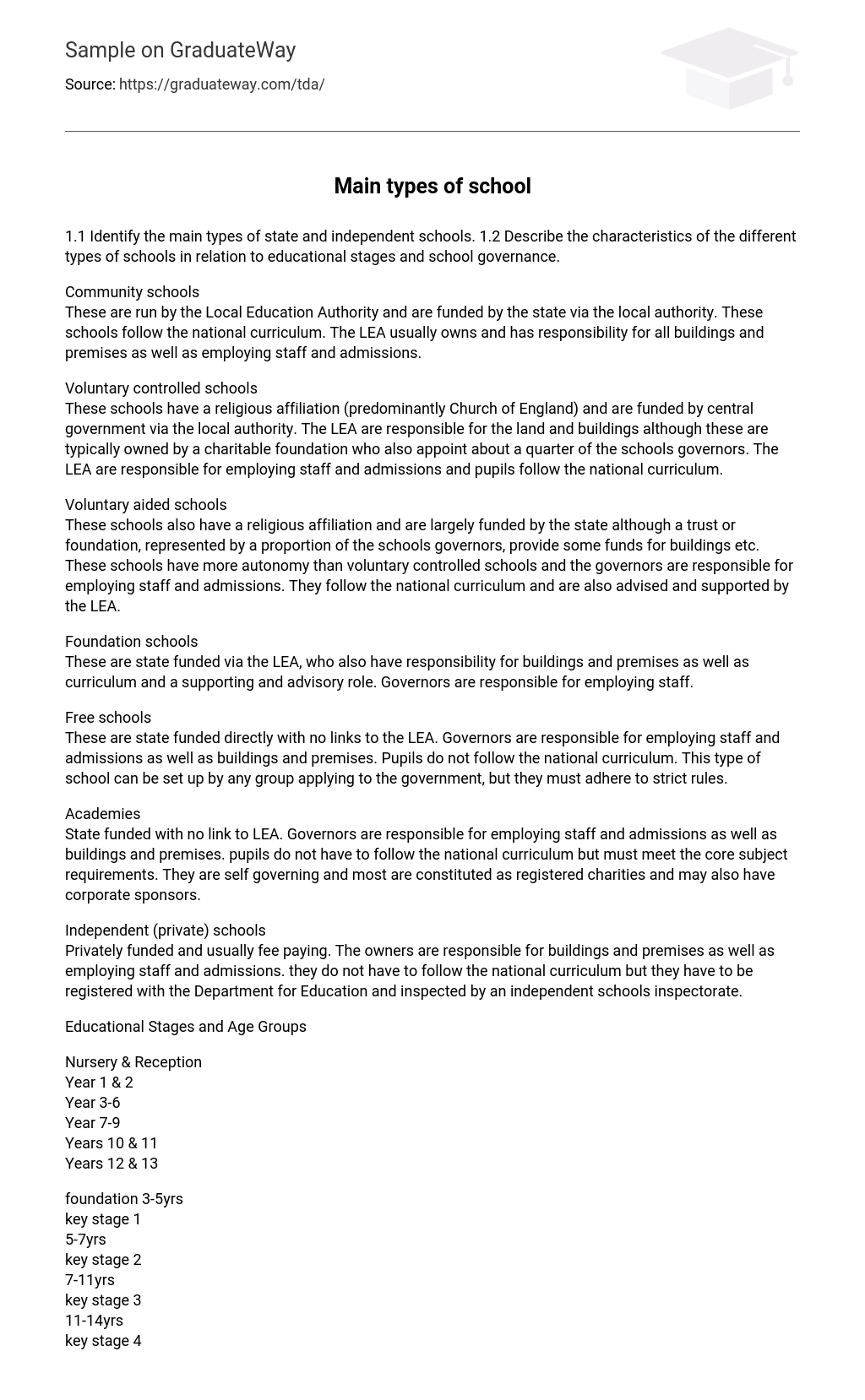1.1 The main types of state and independent schools can be identified, and 1.2 their characteristics can be described in relation to educational stages and school governance.
Community schools are funded by the state through the Local Education Authority (LEA) and follow the national curriculum. The LEA is in charge of owning and managing buildings, hiring staff, overseeing admissions, and managing premises.
Voluntary controlled schools, which typically have a religious affiliation (mainly Church of England), are funded by the central government through the local authority. The land and buildings are managed by the LEA, but typically owned by a charitable foundation. This foundation appoints around 25% of the school’s governors. The LEA is responsible for staff employment and admissions, and students follow the national curriculum.
Voluntary aided schools have a religious affiliation and receive funding from the state, supplemented by a trust or foundation represented by a portion of the school’s governors. This additional funding is used for purposes such as building maintenance. In terms of autonomy, voluntary aided schools have more independence compared to voluntary controlled schools. The governing body is responsible for hiring staff and managing admissions. These schools adhere to the national curriculum and receive guidance and support from the Local Education Authority (LEA).
Foundation schools are state funded through the LEA, which also oversees buildings, premises, curriculum, and provides support and advice. Governors are in charge of staff employment.
Free schools, which are not affiliated with the LEA, receive direct state funding. A board overseeing staff employment, admissions, buildings, and premises governs these schools. In contrast to other schools, free schools do not adhere to the national curriculum. Any organization can submit an application to establish this kind of school but must comply with stringent regulations.
Academies are self-governing institutions that receive state funding and operate independently from Local Education Authorities (LEAs). The governors of academies have the responsibility for staff recruitment, admissions processes, and maintaining buildings and facilities. Although academies are not obligated to follow the national curriculum, they must ensure their students meet the specified standards in key subjects. Some academies have self-governance, charitable status, and may also receive support from corporate sponsors.
Private schools, also referred to as independent schools, rely on private funding and typically mandate student fees. The owners of these schools are responsible for managing facilities, hiring staff, and overseeing admissions. While they are not obligated to adhere to the national curriculum, they must register with the Department for Education and undergo inspections conducted by an independent schools inspectorate.
Age groups corresponding to different education levels
Nursery & Reception
Year 1 & 2
Year 3-6
Year 7-9
Years 10 & 11
Years 12 & 13
foundation 3-5yrs
key stage 1 5-7yrs
key stage 2 7-11yrs
key stage 3 11-14yrs
key stage 4 14-16yrs
key stage 5 16-18yrs
Nursery 3-4
Infants
4-5
5-7
Junior
7-11
Primary
4-5
5-7
7-11
Secondary
11-14
14-16
may have sixth form
First
4-5
5-7
7-8 or 9
Middle
8 or 9-11, 11-13
Upper
13-
16
6th form college
16-18
Special schools
catering to all age ranges and stages





